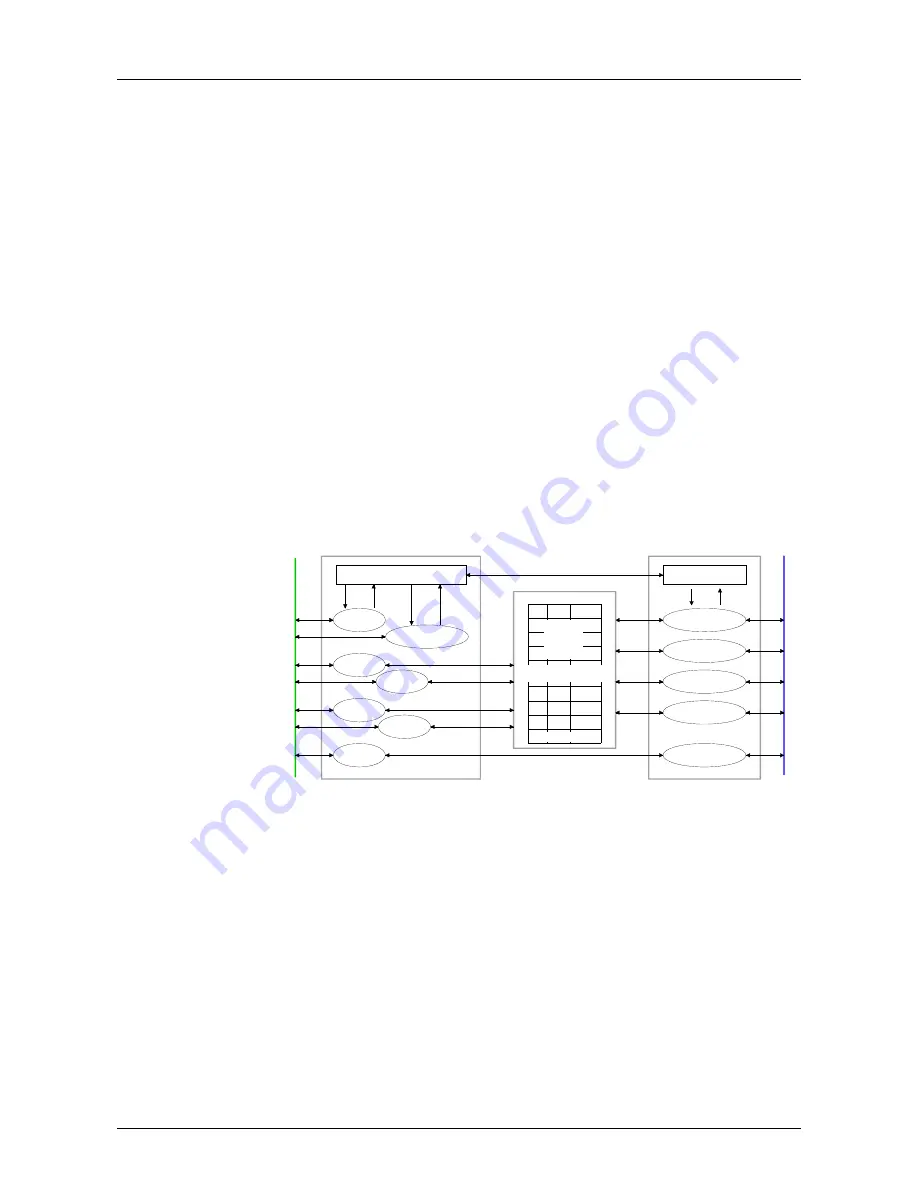
Chapter 2 Decentral block periphery CAN-Bus CANopen
Manual VIPA System 100V
2-14
HB100E - SM-CAN - Rev. 15/02
Deployment with CANopen
The data transfer between CANopen devices happens via data objects.
The CANopen communication profile defines two standard object types
(PDO and SDO) and some special objects (for network management
purposes etc.).
The System 100V for CAN supports the following objects:
•
1 send-PDO, 1 receive-PDO, PDO Linking
•
2 standard-SDO (Server)
•
1 emergency object
•
1 synchronization object (SYNC without time stamp)
•
Node Guarding / Heartbeat
•
NMT
A CANopen device may be structured as follows:
Communication
Status machine
SDO
PDO
PDO
SYNC
NMT
Heartbeat or
Node Guarding
SDO
Status machine
Application
Object
Object directory
Index Subind.
Value
entry 1
entry 2
entry 3
.
.
.
entry n
Application
Application
Object
Application
Object
Application
Object
Application
Object
P
roc
es
s
(
I/
O
s
)
CA
N bu
s sys
tem
Communication
Supports the communication data objects and the according functionality
for the data transfer via the CANopen network.
Application
The application data objects contain e.g. the input and output data. An
application status machine leads the outputs into a secure state in cause of
an error.
The object directory is organized as a 2 dimensional table. Data is
addressed via index and subindex.
Object directory
This directory contains all data objects (application data + parameters) that
are accessible and that influence communication, application and status
machine behavior.
Overview
Structure of the
device model
















































